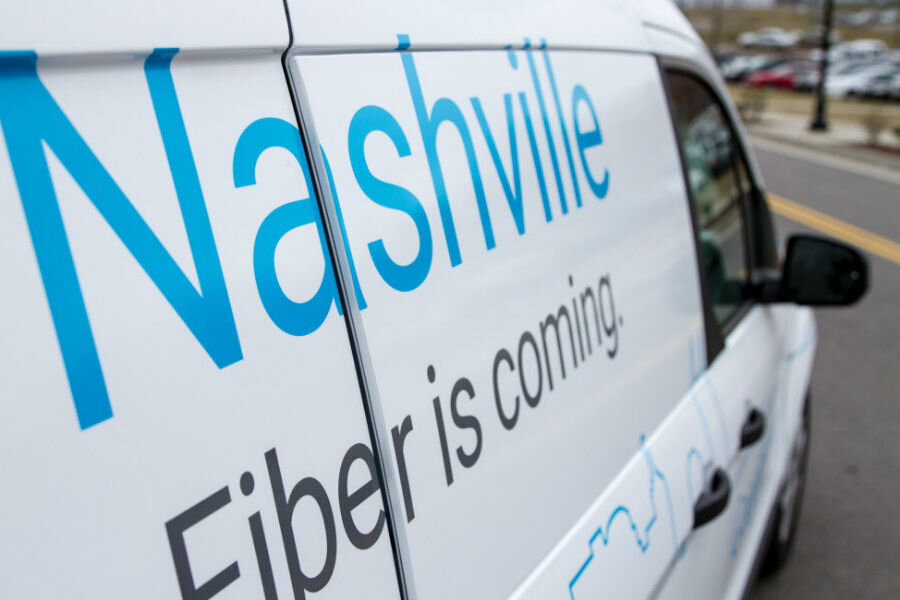Google Fiber's plan: disrupt telecom's hold on broadband
Loading...
Transcending the physical barriers to bringing the internet to hard-to-reach areas, Google Fiber is attempting to shake up a stagnating market by testing out wireless internet.
Google’s parent company Alphabet Inc. plans to test cheap wireless high-speed internet in 24 metropolitan areas, according to an August 5 filing with the US Federal Communications Commission (FCC).
The number of Americans with a high-speed home internet connection hasn't budged much in the last couple of years, while the biggest players – Comcast, Time Warner Cable and Verizon – have long enjoyed duopolies or monopolies in cities around the country. Google Fiber intends to challenge competitors to match its breakneck speeds and low prices, while bringing the internet to new customers.
Google Fiber aims to provide up to 100 times the speed of a typical broadband connection, but the installation of the underground cables is both expensive and time-consuming. The so-called "last mile," bringing the cable directly into people's homes, often involves tearing up streets and digging up sidewalks. Recognizing this burden, Google halted the rollout of its fiber-optic internet service in several California cities on Monday, as the company apparently explores wirelessly providing that last mile instead.
In June, Google acquired the internet company Webpass, which beams "point-to-point" wireless internet between transmitters installed on high buildings. Webpass typically serves businesses, apartment buildings, and condos, which receive the signal to an antenna and then run data cables throughout the building for users to connect to the internet through an ethernet cable.
Likely, Google will run its fiber-optic cable to a neighborhood and then use the wireless technology to distribute the connection to nearby homes.
"One of the things that is intriguing about wireless is that it allows you to reach houses and users that are in lower density settings – where fiber becomes too expensive," Craig Barratt, who oversees Google Fiber, told Recode in April.
As of a January Federal Communications Commission report, 23 million rural Americans, or 39 percent, lacked access to its benchmark speed for high-quality internet provision, at 25 megabits per second (Mbps) download speed/3 Mbps upload speed.
Google Fiber intends to bring 40 times that speed to rural areas, if its wireless internet speed can match the wired speed of 1 gigabit per second currently being delivered to a handful of cities throughout the United States.
Only sixty-seven percent of Americans have a broadband connection at home, according to December 2015 Pew Research Center data, a dip from 70 percent in 2013, and most who lack the service cite prohibitive costs. Thirteen percent of Americans depend on their smartphones for access to the internet, limiting them to slower speeds and data caps. But wirelessly delivered broadband is a feasible alternative for rural areas.
Like a mashup between cellphone internet provision and satellite TV, Google Fiber's wireless service will rely on radio waves through a satellite that serves a fixed location.
Only a third of Americans have at least two options for broadband providers and a tenth have no choice at all, according to a January FCC report.
It cost Google more than $1 billion to spread across the Kansas City region, where it first rolled out Fiber, and will likely cost as much in each new Fiber city, according to sources. But wireless could be deployed much more cheaply, at a fifth of the cost of fiber, which is roughly $1,000 per home, industry insiders told Recode.
A couple of the cities, including Austin, Texas; and Provo, Utah, already have the ultra-high-speed Google Fiber services, carried through cables. The others on the tentative list are newcomers to the service, from Palo Alto, Calif., to Raleigh, N.C. In these locales, Google employees, contractors, and some “trusted testers” selected by Google on a volunteer basis would experiment using the data carried in the 3.5 gigahertz (GHz) radio spectrum, a frequency much higher than those used for mobile data.
"We are working to test the viability of a wireless network that relies on newly available spectrum," a spokesperson confirmed to Business Insider. "The project is in early stages today, but we hope this technology can one day help deliver more abundant Internet access to consumers."
If past expansions of Google Fiber are any indication, residents of the 24 cities conducting tests of wireless technology can expect immediate benefits, as competitors like AT&T and Comcast ramp up their own fiber speeds to compare.
"In 100 percent of the cities where (Google has) announced a fiber build the telco [telecommunications company] has announced an upgrade to fiber and almost 100 percent of the cable guys have said they're going to do it as well," Blair Levin, a senior fellow at the Brookings Institution, told Mercury News.
"In this game, Google is a likely winner no matter what," Brookings' Mr. Levin told Mercury News.
Regardless of whether the internet service is provided by Google itself or an alternative, Google stands to gain: faster, more widespread internet means more clicks on Google ads. And America stands to gain as well, from a better-connected society.
Google also has even loftier plans for bringing the internet to the 60 percent of the world’s people who don’t have it. Its Project Loon – an army of high-altitude solar-powered balloons – will offer internet at speeds up to 4G LTE from 9 miles above the ground. Google plans to use these balloons to bring internet access to people in regions in the world without communications infrastructure.






